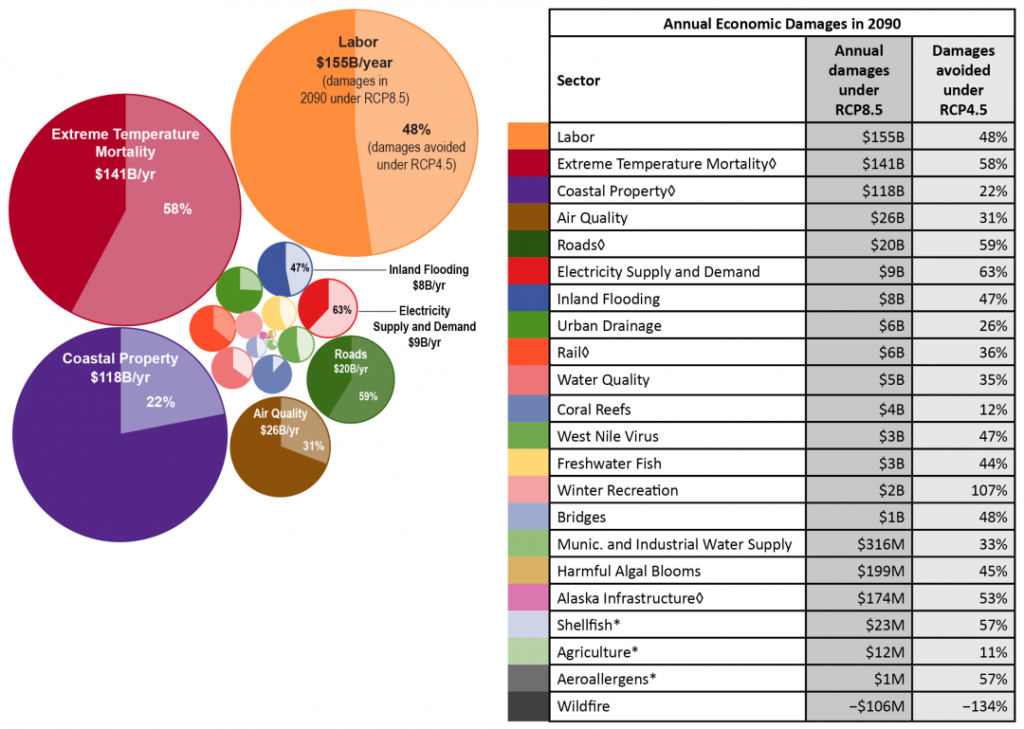The Prediction:
Annual economic damages from climate change could add up to nearly $700 billion by2090, if nations fail to make meaningful changes to address the dangers.
– MIT Technology Review
You don’t have to look far for a climate change article aimed at your heart – deterioration of beautiful coastland, destroying the magnificent coral reefs, the extinction of innocent aquatic and insect species – but when’s the last time climate change was directed at your wallet?
A report by the National Climate Association (brought to my attention by the MIT Technology Review) told a completely different story about climate change that hadn’t really occurred to me. Their predictive data told a climate change story of decreased productivity, economic repercussions, and mortality.

This report really came as a shock to me. Yes, the timeline is a little ambitious. I mean, it’s like a pre-World War I Henry Ford predicting what would happen in the auto industry seventy-five years later in 1990. It’s inconceivable. However, what I do like about this report, is that it uncovers some perspectives that we rarely discuss when it comes to climate change.
The report talks about the economic losses due to heat exhaustion. The report speaks to the increased heat-related deaths. It covers the effects on simple
I’ve come to realize that our environment may “feel the heat” of climate change, but it hadn’t occurred to me that the very lifestyles we live and the way we work would be affected as well.
Scientists have long recognized that extreme temperatures can reduce productivity, as well as lowering lifetime earnings, widening wealth disparities, inciting violence, and increasing suicides and deaths (see “Death will be one of the highest economic costs of climate change”).
Faced with sizzling temperatures, workers compensate by changing the timing, location, level, or type of work they do, all of which can affect their output and pay.
The effect is particularly pronounced with manual outdoor labor like farming and construction, but it shows up even in air-conditioned factories or offices, Walker says. In the United States, auto plant production drops by 8% during weeks with six or more days above 90 ˚F, according to a 2012 study.
James Temple, MIT Technology Review
You tell ConAgra foods that extreme heat will kill their crops and they’ll engineer a crop that needs less water. You tell ConAgra foods that extreme heat will make their workers less productive and they’ll think about their bottom line – and either want to make a positive environmental impact or pour resources into robots and drones that can withstand the inhumane conditions.
Already a future thinker?
Then become a friend.
A Lesson in Futurology
More than anything, this is a lesson in futurology and how futuristic challenges are rarely single-faceted. There’s always more than meets the eye if you’re willing to look further than the obvious. In the realm of climate change, there are unforeseen consequences (and thus opportunities) that don’t get discussed.
For instance, companies that sell equipment for outdoor activities – Schwinn bikes, Goalrilla basketball hoops, football cleats – will all feel the effects if people are spending less time outside. Is there a way to adapt these outdoor products?
Hotter average temperatures will undoubtedly increase the wear on roofing shingles. Is there an opportunity to create a more efficient tile?
Regardless of whether humans do in fact contribute to climate change (I’m not here to discuss that), there’s a chance that just a couple decades from now we’ll be living in more environmentally strenuous times. These pain points scream for innovative opportunities
